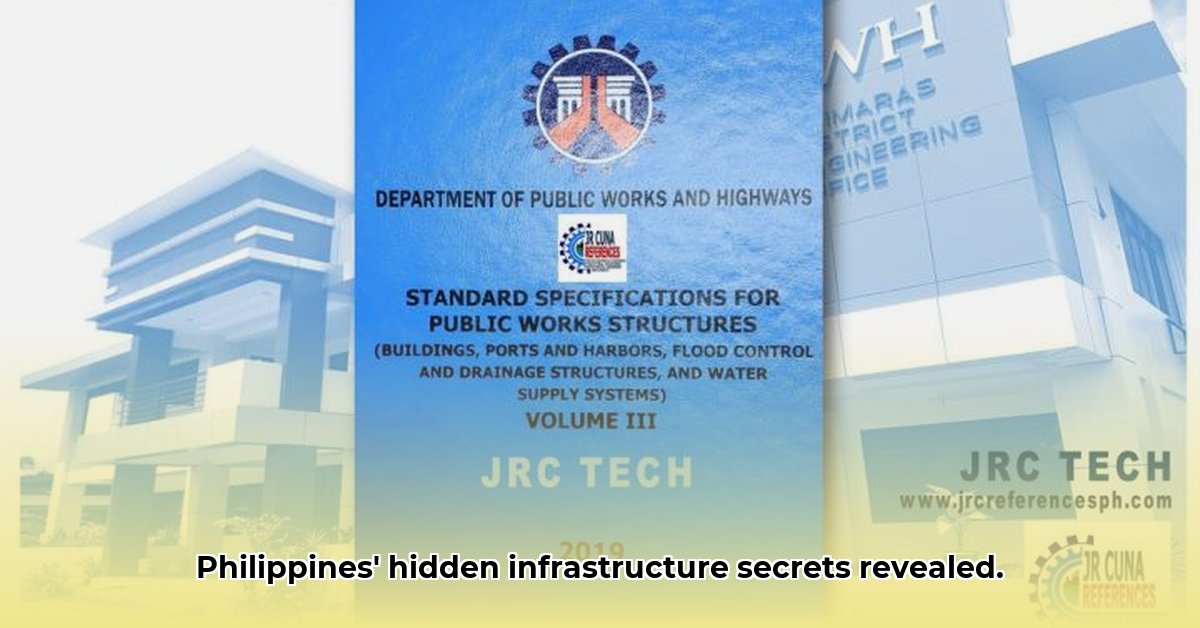
The DPWH 2004 Blue Book: A Policy Analysis
The Department of Public Works and Highways (DPWH) 2004 Blue Book, representing a significant update to its standard specifications, aimed to transform Philippine infrastructure development. This informational article analyzes the book's contents, intended impact, implementation challenges, and offers actionable insights for future infrastructure projects. While focusing on the 2004 specifications, we will also project future needs and suggest areas for improvement. You can download the 2004 Blue Book here.
A Comprehensive Overhaul: The Goals of the 2004 Blue Book
The 2004 Blue Book wasn't a minor revision; it was a complete overhaul of the 1995 version, deemed outdated and inadequate for the Philippines' evolving infrastructure needs. Its primary goal was to improve the quality, lifespan, and cost-effectiveness of infrastructure projects by establishing standardized construction methods and material specifications. This ambition represented a significant commitment to upgrading the nation's infrastructure. However, did this ambitious plan achieve its intended results?
Implementation Challenges: Bridging the Gap Between Theory and Practice
Implementing the Blue Book proved challenging. While comprehensive, the specifications struggled to accommodate the diverse geographical conditions across the archipelago – from flatlands to mountainous terrains and urban centers to remote islands. This necessitated project-specific adjustments, raising questions about the consistency of standards and the comparability of project outcomes. Did these necessary adjustments ultimately compromise the intended standardization, affecting the overall effectiveness of the Blue Book?
The question arises: How effectively did the 2004 Blue Book translate its ambitious goals into tangible results? The answer requires a thorough examination of the available data. Did the implemented projects exhibit improved longevity and cost-efficiency as intended?
Evaluating Success: The Crucial Role of Data
Assessing the Blue Book's success requires concrete data. Did projects built using the new standards indeed exhibit longer lifespans and lower costs? Were there improvements in overall project quality compared to predecessors built under older specifications? A lack of comprehensive data collection significantly hinders a complete evaluation of the Blue Book’s long-term impact. The scarcity of robust data presents a significant obstacle to definitively assessing the Blue Book’s effectiveness.
Actionable Insights: Paving the Way for Future Infrastructure Development
The 2004 Blue Book offers crucial lessons in infrastructure planning and policy. Success hinges on robust data collection and transparent evaluation. To improve future infrastructure development, we propose the following:
Comprehensive Data Collection: Implement a standardized system to meticulously track project costs, timelines, material usage, and performance metrics across all projects. This data is vital for evaluating the effectiveness of future specifications and identifying areas for improvement.
Regular Post-Project Reviews: Conduct thorough post-project evaluations to identify successes and failures, informing future specifications and construction practices. These assessments are critical for continuous improvement and adaptation to evolving needs.
Enhanced Transparency and Accountability: Make project data publicly accessible to foster accountability and encourage collaborative improvement among all stakeholders. Transparency and open communication are paramount for ensuring responsible infrastructure development.
Adaptive Specifications: Regularly review and update specifications to reflect technological advancements, evolving material standards and address unforeseen challenges. Continuous refinement and adaptation are essential for a responsive and effective infrastructure development program.
Collaboration for Success: A Multi-Stakeholder Approach
The success of future infrastructure projects depends on the collaborative efforts of various stakeholders. A coordinated approach involving the DPWH, contractors, the government budget office, and the public is essential. This collaborative engagement is essential to build a more resilient, sustainable, and efficient infrastructure system.
Key Takeaways:
- The 2004 DPWH Blue Book aimed to improve the quality and efficiency of Philippine infrastructure projects through standardized specifications.
- Implementation faced challenges due to diverse geographical conditions and bureaucratic hurdles.
- The lack of comprehensive data limits the ability to fully assess the Blue Book's long-term impact.
- Improved data collection, regular reviews, transparency, and adaptive specifications are crucial for future infrastructure development.
This analysis highlights the importance of data-driven decision-making and collaborative efforts in achieving sustainable and efficient infrastructure development in the Philippines. Further research is needed to fully understand the long-term effects of the 2004 Blue Book and to inform future infrastructure planning.
⭐⭐⭐⭐☆ (4.8)
Download via Link 1
Download via Link 2
Last updated: Sunday, April 27, 2025